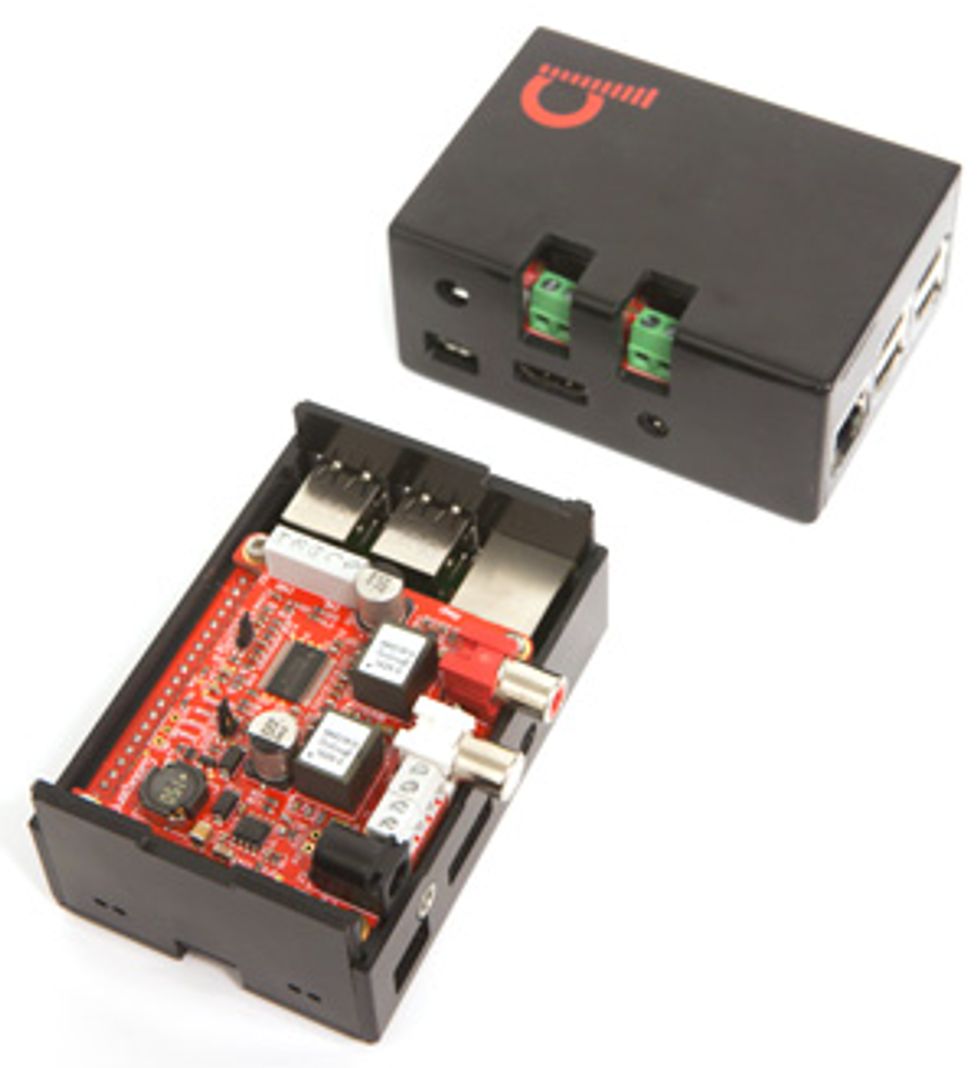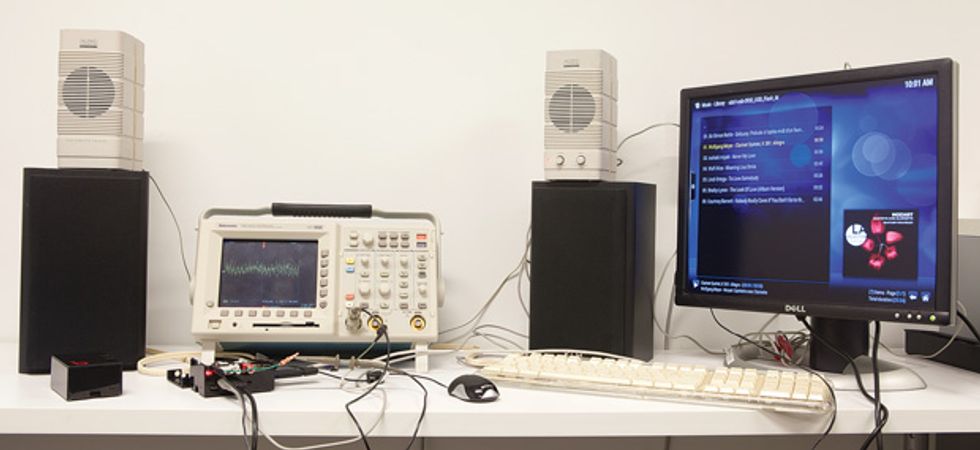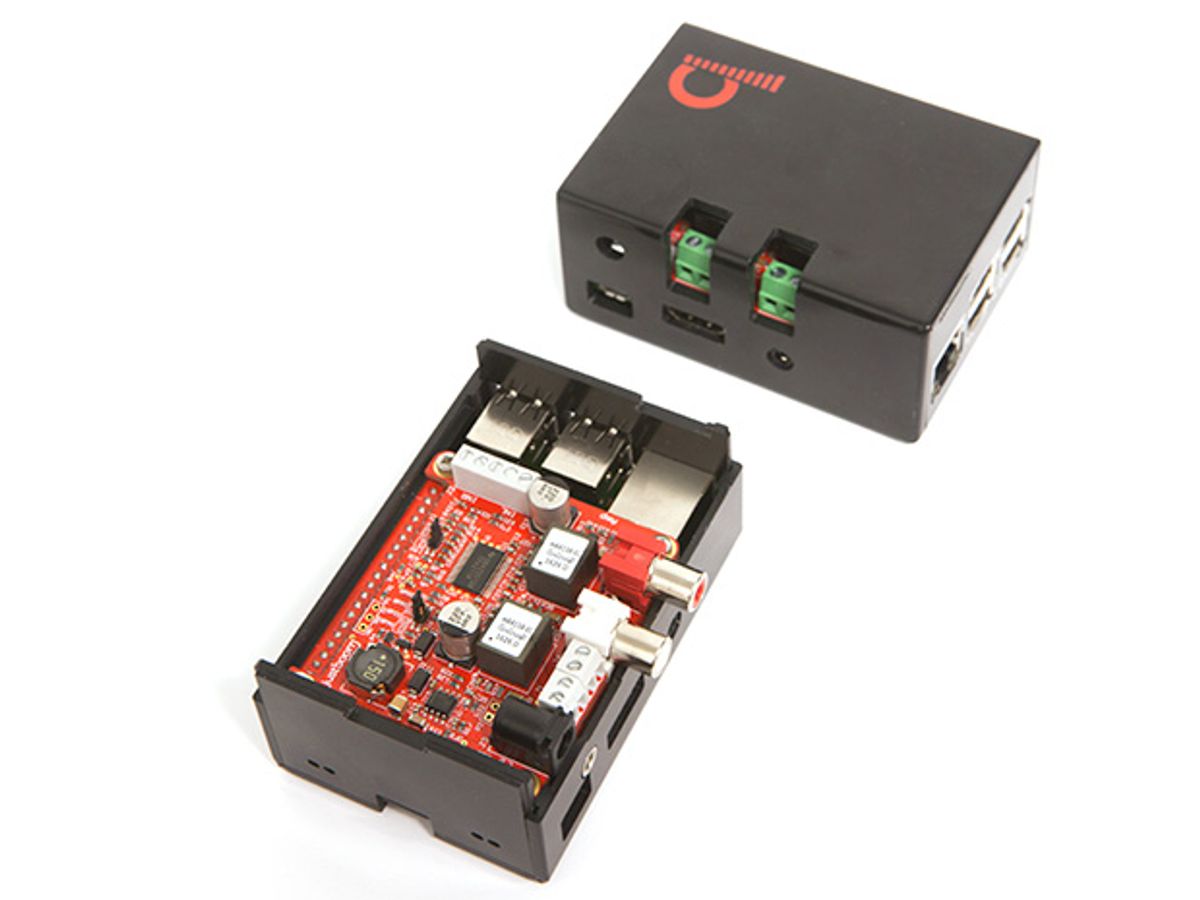
From its very first version, the Raspberry Pi attracted interest as a small, inexpensive, and network-friendly home multimedia player. It comes with built-in HDMI and composite video for sending signals to television sets, and most versions have an analog 3.5-millimeter audio socket. Consequently, there’s a fleet of Raspberry Pi-compatible software packages designed to play video and audio files using a stripped-down, TV-friendly interface and which can be networked for multiroom audio.
However, while the high-definition video output is sufficient for viewing most movies (unless you have one of the latest 4K screens, of course), the analog audio is not up to the standards of dedicated audiophiles. As a result, a number of companies have started offering various expansion options to improve the Pi’s audio capabilities and ease of integration into existing hi-fi setups.
We wanted to try out one of these systems atIEEE Spectrum—Executive Editor Glenn Zorpette is our resident audiophile—and JustBoom’s product line caught my eye due to the flexibility and audio quality promised by its wide range of add-on HAT (“hardware attached on top”) and stand-alone boards. JustBoom kindly sent us a selection of its kits, and so we tried them out to see if they could deliver.
The first thing I realized is that the very flexibility and range that attracted me to JustBoom’s products means that figuring out what is supposed to go with what can induce some head-scratching. JustBoom does provide a flowchart-style product guide, but it’s somewhat confusing.
So to simplify matters for Pi owners: If you are looking to connect headphones, active speakers (the kind that have their own power supply), or other audio equipment by way of a 3.5-mm or RCA socket, you want a DAC HAT, which is a high-audio-resolution digital-to-analog converter. JustBoom’s DAC HATs come in two flavors: a US $38 one for all the Model A and Model B versions of the Raspberry Pi, and a $25 one for the smaller Pi Zero. If you want to hook your Pi up to a sound system using an optical audio port, use the Digi HAT, which again comes in two flavors. If you want to power passive speakers (the kind with just two wires running into the back of each) directly from the Pi, go with the $76 Amp HAT, which combines a DAC and an amplifier. (If you want the option of being able to listen using headphones and passive speakers with the same Pi, you can buy a DAC HAT and combine it with a $75 stand-alone Amp board that sits on top of the HAT.) JustBoom sells cases that enclose all the various combinations.
Putting the pieces together was straightforward. Each HAT came with mounting screws and plastic separators to hold the board in place once it was pushed onto the Pi’s general purpose input/output (GPIO) connector. Using three Pi’s, I assembled a DAC With Amp, an Amp HAT, and a Digi HAT. (I would have tried the supplied HATs for the Pi Zero as well, but Pi Zeros tend to be constantly out of stock!) The amplifier boards have a socket for an external 8- to 24-volt power supply. This also feeds into the Pi, so you can dispense with the USB cable normally used to power the Pi. If you want to deliver the maximum power the amplifiers can output—55 watts peak—you’ll need a 24-volt supply rated at over 3.1 amperes.
The cases, each with a nice glossy black finish, snap rather than screw together. (I personally prefer screws, as you avoid having to hold pieces together in just the right way and with just the right amount of pressure lest they pop out at the wrong moment during assembly.)
Installing the software was also straightforward: I formatted a microSD card and copied over a NOOBS boot image from the Raspberry Pi Foundation website. NOOBS lets a user easily install a number of operating systems on the Pi via a network connection. I used NOOBS to install some stripped-down operating systems—in this case the OSMC and LibreElec distributions—that are designed to support a single multimedia player application.

JustBoom provides software guides for several popular players and operating systems, with more on the way. On my first attempt, I tried configuring the DAC With Amp setup to work with the popular OSMC package, but I couldn’t get any of the hardware settings to stick, and couldn’t get any sound out of either the DAC (via the 3.5-mm socket) or the amp speaker connectors using a small passive speaker. After some frustrated poking around the JustBoom website for some missing step and general googling, I tried again using LibreElec. This OS/media player combo proved to have the advantage of a much simpler configuration process and the welcome ability to actually deliver sound out of all the various connectors.
Sticking with LibreElec, I tried the Amp HAT with some much larger passive speakers provided by our audiophile executive editor. Sound from a sample set of high-resolution music files also provided by him (including classical and rock music) was soon pouring out over an impressive range of volumes. At the very loudest point of one rock song, the Pi spontaneously rebooted, most likely because of the anemic 800-milliampere power supply I was using. Nonetheless, even with this supply, it was possible to play music at a level well beyond the comfort threshold for an indoor setup.
Summoning Spectrum’s executive editor for his final verdict, I cycled through the various configurations, including using active speakers to compare the Pi’s native analog output to the DAC’s. Zorpette was pleasantly surprised by the quality of the output, which he feels can stand its ground with even much pricier home DACs or amplifiers.
This article appears in the March 2017 print issue as “Hi-Fi With Your Pi.”
